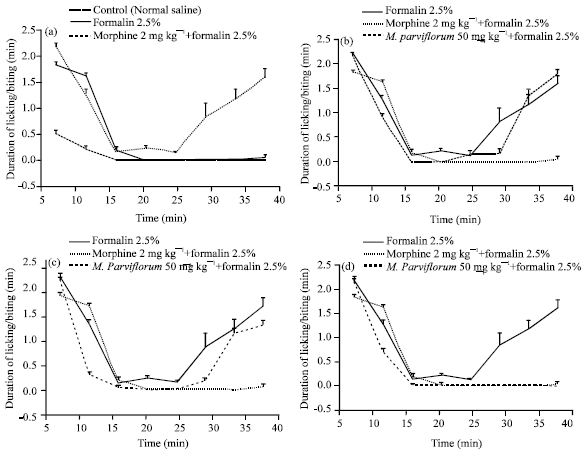Short Communication
Evaluation of Analgesic Effects of Hydroalcoholic Extract of Marrubium parviflorum by Formalin Test in Mice
Department of Pharmacognosy, Faculty of Pharmacy, Tehran University of Medical Sciences, Tehran, Iran
Mohammad-reza Delnavazi
Department of Pharmacognosy, Faculty of Pharmacy, Tehran University of Medical Sciences, Tehran, Iran
Vahid Nikoui
Department of Pharmacology, School of Medicine, Tehran University of Medical Sciences, Tehran, Iran
Sattar Ostadhadi
Department of Pharmacology, School of Medicine, Tehran University of Medical Sciences, Tehran, Iran
Azam Bakhtiarian
Department of Pharmacology, School of Medicine, Tehran University of Medical Sciences, Tehran, Iran









